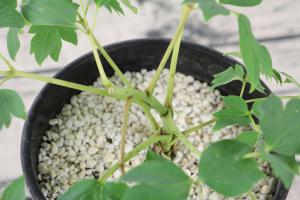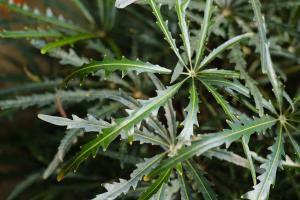Introduction
If you have a rubber tree plant, you might be wondering how to prune it properly. Pruning is an important part of plant care, as it can help control the plant's size and shape, promote new growth, and prevent disease. In this article, we'll cover the basics of pruning a rubber tree plant.
Why Prune a Rubber Tree Plant?
There are several reasons why you might want to prune your rubber tree plant:
To control the size and shape of the plant
To promote new growth and maintain a healthy appearance
To remove dead or diseased branches and leaves
To increase air circulation and reduce the risk of disease
When to Prune a Rubber Tree Plant
The best time to prune a rubber tree plant is in the spring or summer, when the plant is actively growing. Avoid pruning in the fall or winter, as this can slow down growth and make the plant more susceptible to disease.
How to Prune a Rubber Tree Plant
Before you begin pruning, make sure you have a clean pair of pruning shears. It's important to use sharp, clean shears to prevent damage to the tree and the spread of disease.
Start by identifying the branches you want to remove. Look for any dead or diseased branches, as well as any branches that are rubbing against each other or growing in the wrong direction. You can also prune back any long or leggy branches to promote a fuller, bushier shape.
Make your cuts at a slant, about ? inch above a leaf node or bud. This will help prevent damage to the tree and promote new growth. Avoid cutting too close to the trunk, as this can damage the tree's bark and make it more susceptible to disease.
After you've finished pruning, be sure to clean your shears with rubbing alcohol or another disinfectant. This will help prevent the spread of disease to other plants.
Caring for Your Pruned Rubber Tree Plant
After you've pruned your rubber tree plant, it's important to continue caring for it properly to promote healthy growth. Here are a few tips:
Water your plant regularly, but be careful not to overwater. Rubber tree plants prefer moist soil, but they can be prone to root rot if the soil stays too wet.
Provide your plant with bright, indirect light. Avoid direct sunlight, which can scorch the leaves.
Fertilize your plant once a month with a balanced, water-soluble fertilizer. This will help promote healthy growth.
Keep an eye out for pests and disease. Common pests include spider mites and mealybugs, while common diseases include leaf spot and root rot.
Conclusion
Pruning your rubber tree plant is an important part of plant care, as it can help control the plant's size and shape, promote new growth, and prevent disease. By following these simple tips, you can prune your rubber tree plant with confidence and enjoy a healthy, beautiful plant for years to come.

 how many times do yo...
how many times do yo... how many planted tre...
how many planted tre... how many pine trees ...
how many pine trees ... how many pecan trees...
how many pecan trees... how many plants comp...
how many plants comp... how many plants can ...
how many plants can ... how many plants and ...
how many plants and ... how many pepper plan...
how many pepper plan...































